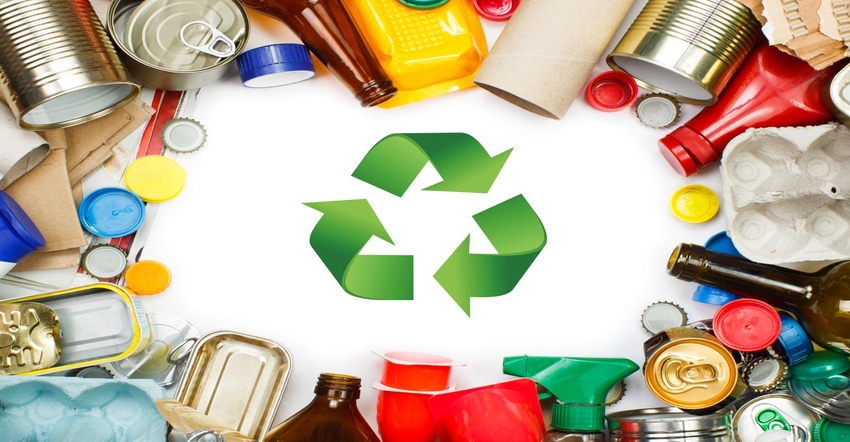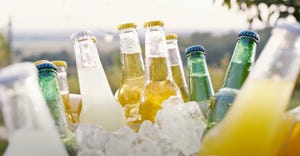Not only does food and beverage packaging need to preserve freshness and attract the consumer’s eye, increasingly it must also offer a sustainability story and personalization options.
January 4, 2023

Who doesn’t savor cracking open an ice-cold beverage, crunching into the latest snack innovation, or taking a hearty bite out of an ice cream novelty?
As palate-pleasing as that sounds, think of all the products vying for the attention (and cash) of consumers. In addition to entrenched buying habits, packaging—from personalized to smart tech and sustainable—can go a long way toward helping to cinch a sale. On average, brands have around seven seconds to make a good impression before a customer heads for the next alternative, according to retailminded.com.
How big of a punch does packaging pack in the industry? Put it this way: When trying to decide whether to pluck down their dollars, 72% of shoppers surveyed are influenced by the packaging of a product, according to Ipsos research. Two-thirds of respondents indicated the materials used to package a product had impacted their decision.
Speaking of the wallet, according to marketwatch.com, the food and beverage packaging market will be spry over the next six years, with a global market that, by 2028, will hit multimillion dollars.
Sustainable packaging on the rise
Sustainability is hitting a sweet spot across the globe, with 85% of individuals noting their buying habits now include greater sustainability, per Ipsos. Companies choosing to turn a blind eye to sustainable packaging are increasingly likely to feel the pinch at retail. And if a brand is targeting Millennials or Gen Z, it is really courting hard times. After all, both groups want the scoop on the materials that businesses are incorporating into their repertoire, not to mention the methods of sourcing them.
Over the next five to 10 years, companies will prioritize going carbon neutral, predicted Aswin Chandrasekaran, SVP of global professional services firm Genpact. “By using rPET bottles, improved recycling and driving to circular economy, sustainable water management will remain a top agenda item for all beverage companies along with ensuring energy is sourced from renewables.” rPET bottles are manufactured from recycled PET bottles. Beverage companies have stringent goals with respect to usage of rPET bottles, along with their collection and recycling, he explained.
Additionally, with the 2023 Winter Fancy Food Show in Las Vegas (Jan. 15-17) and Summer Fancy Food Show in New York (June 25-27) in the crosshairs of industry, most companies will prioritize reducing their packaging cost, Chandrasekaran suggested. Furthermore, the faster growth of packaging is coming from emerging markets, which are adopting e-commerce and practices in developed markets.
Four hundred of the most prominent business companies on the globe have already experienced a doubling of their sustainability goals, reported the Global Sustainability Index Institute, per qrcode-tiger.com.
Chandrasekaran added, “Companies like Amazon and its peers will not sell product unless they are certain the packaging is recyclable and/or reusable. CPG companies are having to adopt robust documenting details pertaining to packaging.”
In the meantime, compostable is also increasingly gaining a foothold within the packaging landscape, said Denise Purcell, VP of resource development at the Specialty Food Association, which puts on the Fancy Food shows. For example, she noted, “one company’s putting single-use spices into a compostable pouch, while another’s done a pour-over coffee in which the whole filter and packaging’s compostable.”
She added that environmental concerns—including sustainability, climate-friendly products and upcycled ingredients—are product and brand attributes “consumers report are important to them in our annual Today’s Specialty Food Consumer research, so we believe we’ll see an increase in sustainable packaging.”
Personalized packaging on deck
Personalized packaging is also growing by leaps and bounds. Future Market Insights estimated the industry will double in value over the next decade, reaching more than $60 billion by the end of 2033.
“The most famous example of personalized packaging in food and beverage is the customization of the Coke bottle with a name or a phrase,” Chandrasekaran offered. “Coca-Cola has a separate website that allows consumers to create their own designs from a set of options and add a name or phrase. To manage this kind of personalization, food and beverage companies typically work with third-party repacking companies.”
The food and beverage industry will play a vital role in the future of personalized packaging. While these efforts could help stoke brand recognition and customer interaction for companies that embark on the journey, new designs can pose challenges. Businesses need to commit considerably more time and resources into these options, which could negatively impact not only the cost of manufacturing, but also the bottom line.
As companies continue focusing on catering to consumers via personalization, the expectation for personal packaging will jump even more.
About the Author(s)
You May Also Like






